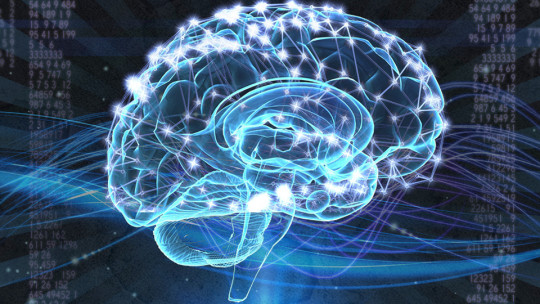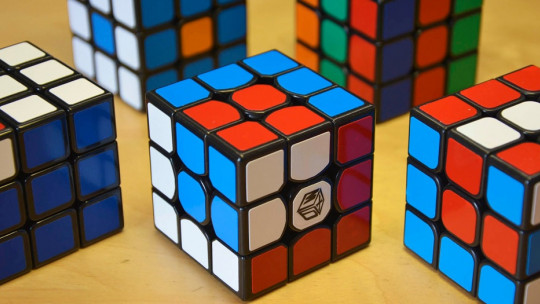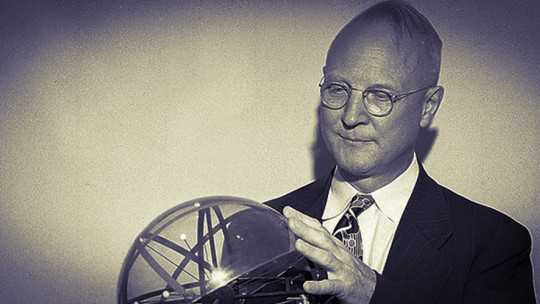
There are many models that have been created from psychology to try to explain the phenomenon of intelligence better and better.
One of them is the so-called hierarchical Vernon model This is what we will focus on in this article in order to delve deeper into this theory and learn about all the particularities that differentiate it from the others. Likewise, we will discover the strengths and weaknesses of this approach.
What is the Vernon Hierarchical Model?
Vernon’s hierarchical model is a theory proposed by the Canadian psychologist Philip Vernon to try to explain the functioning of intelligence expanding the explanations that other models of the time offered to interpret and predict this phenomenon at that time.
It is also possible to find the terminology of Vernon-Burt’s hierarchical structure, since Cyril Burt, a British psychologist, was another of the authors who contributed to the creation of these new models, which were based on the hierarchy of factors compared to other approaches. previous.
The key underlying Vernon’s hierarchical model is precisely that it is based on the premise that intelligence is not a single quality, but rather a range of capacities within each subject, each one destined for a series of tasks, but not all with the same importance. It is precisely that hierarchy, the element that distinguishes this theory.
Therefore, what Vernon claims is that it will be some parts of intelligence, specifically, that will have dominance over the rest of them. Therefore, it would be a factorial model, with dominant factors and subfactors that would be subordinate to them. Each dominant factor would have an associated group of subfactors. In turn, new levels can occur, creating a pyramid of factors.
This way, a very precise or very technical skill in a person, would be represented within Vernon’s hierarchical model as one of the lowest level subfactors since it would depend on other factors, increasingly broader and therefore higher in the hierarchy.
Structure of Vernon’s hierarchical model
We have seen a first approximation to Vernon’s hierarchical model. Now we must continue investigating its structure to understand it better. We have already stated that, for Vernon, the most specific skills of intelligence are located at the most subordinate level of all and from there they climb steps towards more general skills.
But what is at the top of that pyramid? At the top of Vernon’s hierarchical model we would find nothing less than the g factor of intelligence, also known as the general cognitive factor. This concept was introduced by another psychologist, the British Charles Spearman.
Spearman was one of the pioneers in theories of intelligence, and without his work many of the subsequent investigations that gave rise to new theories could not have been carried out, among which is the one in question, that of Vernon’s hierarchical model.
Returning to the g factor of intelligence, we must know that it refers to a construct that would encompass all possible cognitive abilities of intelligence That is, it would be complete intelligence, including any type of possible skill that the person in question can perform. The g factor represents the point in the structure where there can be the most variation between different individuals.
We already know the factor that is located at the highest part of the pyramid, according to Vernon’s hierarchical model. Now we will continue moving forward to continue discovering the peculiarities of this theoretical structure. At a level immediately below the g factor of intelligence, there would be the major group factors. These would act as the general categories of intelligence, in a very broad sense.
These large categories would be two. The first of them is the one referred to those skills acquired through the educational process and consisting fundamentally of verbal and numerical skills This category is broader than it may seem, since in reality it would encompass any theoretical concept that we could learn, since it will always be codified in a verbal or numerical way.
The other general category of intelligence, instead of referring to theory, refers to practice He would encompass all issues relating to mechanical, spatial and physical intelligence. Within this block, we would find all the skills related to performance. As we can see, between both categories, there would be room for any skill that could be included within intelligence.
Lower levels of Vernon’s hierarchical model
We already have the highest part of Vernon’s hierarchical model, which is the g factor of intelligence, and the first step of subordination, the two large blocks that we have just seen. If we continue our downward path, we would reach a new step, with more specific factors but at the same time more subordinate to higher levels.
Below these two large categories, which represented the major group factors, we would find a set, the minor group factors The minors are more numerous, since we are no longer talking about blocks as large as in the upper echelon. They would be broad abilities of the human being.
This step represents an intermediate point in Vernon’s hierarchical model, because although we have said that they are broad skills, they are still more specific than the general categories of the higher level (remember, the education factor, verbal-numerical and the practical, spatial mechanics). and physical), but at the same time they are not so concrete as to represent specific abilities.
That is why we would still find an additional step, the most subordinate of all, but which at the same time is the one that represents all those qualities of intelligence necessary for a very specific task. At this point we can appreciate Vernon’s hierarchical model scheme in all its splendor.
We have started at the highest part of the model, where the g factor is located, intelligence in general. Going down a step, we find two main categories, one for questions related to theory and another for practices. Continuing the descent is when the lower group factors appear, for general abilities. AND, Going down to the last step, we find the specific factors, that is, those referring to specific skills
The importance of Vernon’s hierarchical model
After a tour of the scheme proposed by Vernon’s hierarchical model, we must stop for a moment to review the importance that this approach entailed within studies of intelligence throughout the 20th century. To do this, we must mention two other models that preceded Vernon’s.
We have already anticipated one of them, as it would be the two-factor model (bifactorial), proposed by Charles Spearman One of these factors would be g, which we have already talked about. It would be the general factor of intelligence. The other would be the s factor. This, on the contrary, is the factor, or rather, specific factors.
On the other hand, there would be the theory of multiple factors, or theory of primary mental abilities, Louis Leon Thurstone, American psychologist The approach would be exactly the opposite of Spearman’s, since what Thurstone suggests is that there is no general factor g, but only specific factors, which would correspond to each specific ability of the person.
Given the divergence of these two models, it is when we can discover the importance of Vernon’s hierarchical model. Indeed, this approach represents a reconciliation between the two theories. Vernon picked up, on the one hand, Spearman’s idea of a general factor (the g factor), but also the specific factors or mental aptitudes that Thurstone suggested.
Example of Vernon’s hierarchical model
To conclude, we will quickly analyze an example that will allow us to better visualize Vernon’s hierarchical model. To do this we will analyze a very specific skill, such as spelling. To do this we will start at the top of this model. Any skill, whatever it may be, must begin at the top, in the g factor, since this encompasses all the others
If we go down one step, we would realize that we are dealing with a skill corresponding to the verbal-numerical factor, since it is acquired theoretically, through educational processes. If we continue going down, already at the level of the lower general factors, we would reach the reading factor, a more specific skill but which in turn can be subdivided.
And that is precisely what we will do, by descending the last step of Vernon’s hierarchical model and finding the specific specific factor, the one that allows us to spell a word. But it is not the only specific factor of reading, as there are many others, such as comprehension, vocabulary or speed, among others.








